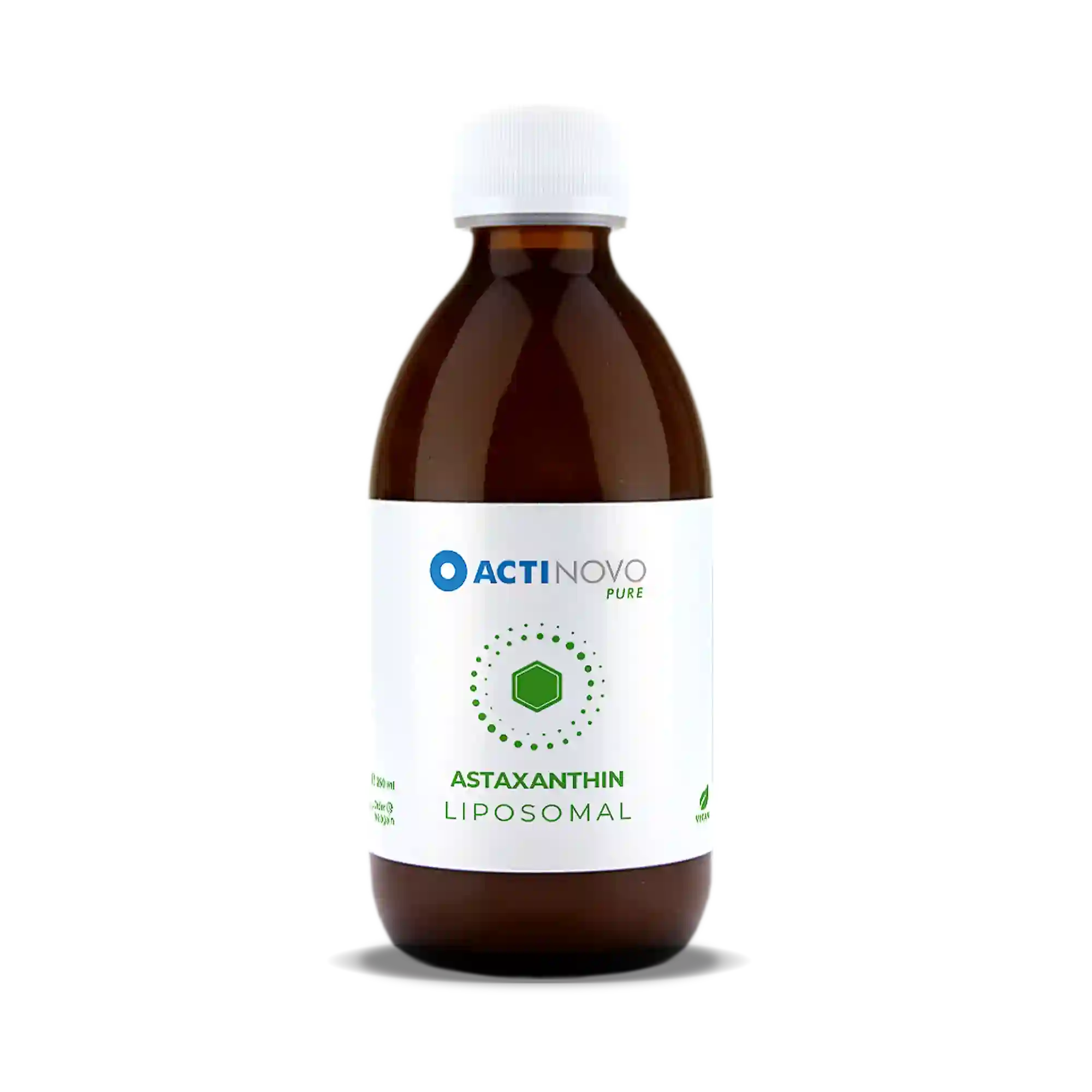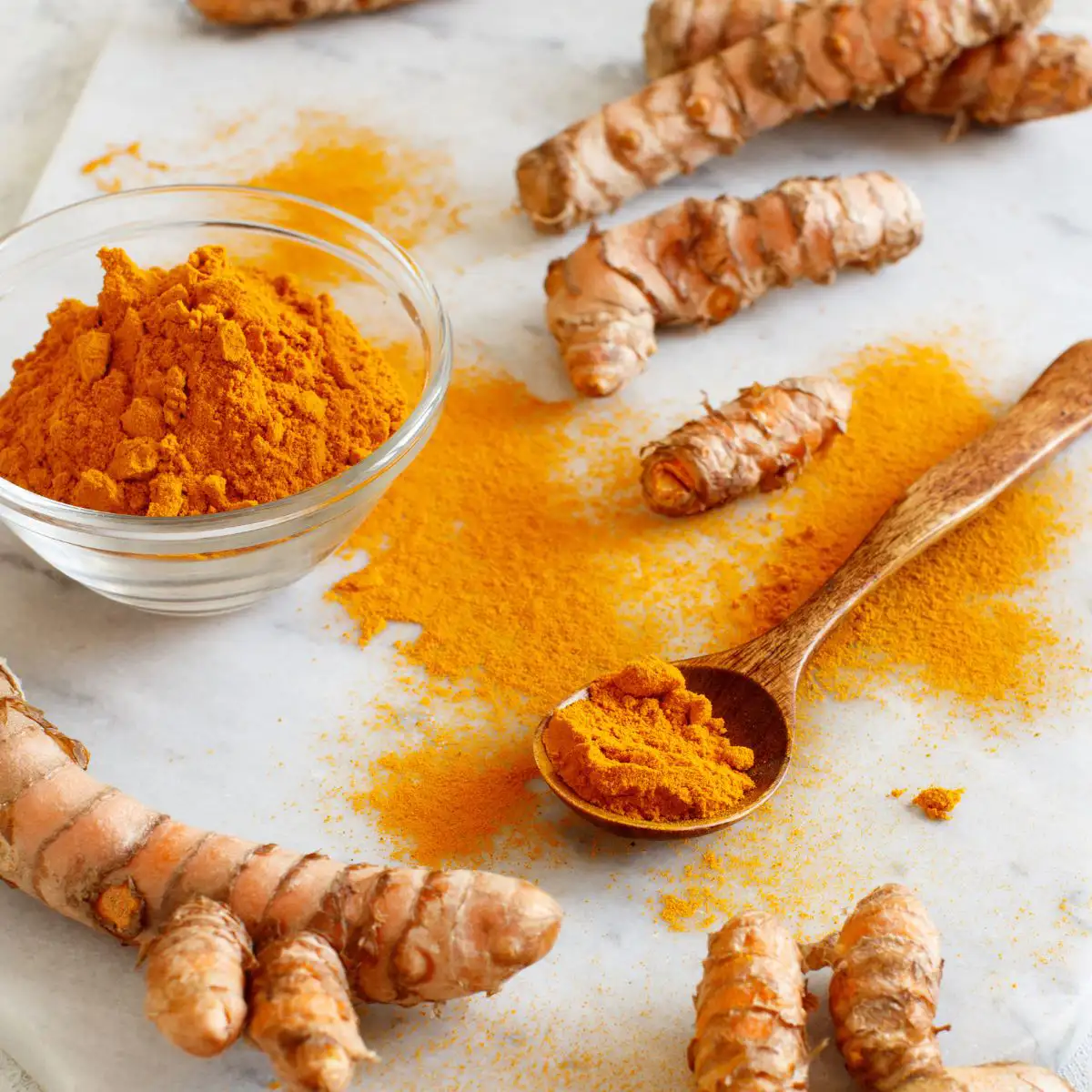Astaxanthin: super antioxidant with multiple effects
While there are many new and exciting plant extracts on the market, astaxanthin is one to notice! This antioxidant reigns supreme over other free radical scavengers.
Astaxanthin is good for providing benefit to the skin and supporting natural beauty from within. This antioxidant caught ActiNovo’s attention, and we hope it catches your interest too.
What will you learn in this guide?
- What is Astaxanthin?
- Where does it come from?
- Benefits of Astaxanthin
- Astaxanthin: Bioavailability
- Frequently Asked Questions
1. What is Astaxanthin?
Astaxanthin is a natural reddish-purple pigment that belongs to the carotenoid group. Carotenoids are naturally occurring, fat-soluble pigments. There are more than 800 known carotenoids, including beta-carotene (found in carrots) and lycopene (found in tomatoes).
Many carotenoids have antioxidant effects, but astaxanthin holds the most antioxidant power. Many studies have shown the antioxidant capabilities of astaxanthin are stronger than beta-carotene, coenzyme Q10, and even vitamin C! [1]
2. Where does it come from?
You can primarily find astaxanthin in food such as crustaceans and fish, specifically salmon. The nutrient is easily recognized by its prominent reddish color. For supplement purposes, manufactures extract the red nutrient from a certain type of algae called Haematococcus pluvialis.
This creates an effective vegan product that anyone can use. It is a big challenge to obtain a significant amount of the antioxidant through diet alone.
Sockeye wild salmon has the highest astaxanthin content of about 3.8 mg per 100 g. Other species of salmon and trout contain astaxanthin, but in much smaller amounts. Shellfish, such as shrimp or lobster, can contain between 1 - 3.6mg per 100g. You would have to eat one filet of salmon and 40 pieces of shrimp to obtain 8mg of astaxanthin from food. That is almost an entire seafood buffet!
Those who follow a plant-based diet, have a seafood allergy, or do not enjoy the taste of fish are missing this significant antioxidant in their diet. To remedy this problem, astaxanthin is now available as a dietary supplement using a vegan algae source.
3. Benefits of Astaxanthin
Fights free radicals
Astaxanthin is often called the most powerful natural antioxidant in the world. In a study comparing antioxidant power, astaxanthin came out on top. Antioxidant activity is 6.000 times higher than vitamin C, 800 times higher than coenzyme Q10, and 550 times higher than vitamin E [2].
Reducing free radicals in the body helps reduce oxidative stress, reactive oxygen species (ROS), and cell damage. This means: healthier skin, protection of DNA, and anti inflammatory properties. Due to its structure and properties, astaxanthin is able to spread throughout the body. This nutrient is one of the few antioxidants that can cross the blood-retinal barrier. This means it can provide antioxidant support to the eye [2].
Interested in learning more about other valuable antioxidants? Check out our antioxidant blog article.
Astaxanthin: Skin Benefit
Astaxanthin’s benefits for the skin make this antioxidant one of the best supplements to support beauty from the inside out! In one study, 30 healthy female volunteers consumed a 6 mg daily oral dose of astaxanthin.
They also used 2mL of an astaxanthin containing skin cream. After 8 weeks, participants noted improvements in skin quality and a reduced appearance of crow’s feet around their eyes.
After consistent astaxanthin supplementation, this study found improvements in skin wrinkles, reduction of age spots, better skin elasticity, improved skin texture, and higher moisture content. [2] The results indicate that astaxanthin can support skin conditions on multiple levels.


Astaxanthin: For Heart Health
Oxidative stress and inflammation are two of the main factors involved in the development of heart disease. Because astaxanthin is a potent antioxidant, there may be some benefit to heart health. There are no human studies investigating the potential of this antioxidant to support heart health. Although, there are promising results in rat studies. Further research is required.
Maintaining healthy cholesterol and triglyceride values are equally important to maintaining heart health. In one study, different astaxanthin doses were provided to participants. In a 12 weeks, participants were given either a placebo or 6mg, 12mg, or 18mg of the supplement.
The high dose groups showed improvements in blood lipid and cholesterol levels. Triglyceride levels decreased and HDL cholesterol (good cholesterol) increased significantly. At doses between 12 and 18 mg/day, the triglyceride levels were significantly reduced [7].
Overall, astaxanthin might be a promising candidate to promote heart health.
Astaxanthin: For skin hydration and UV protection
Astaxanthin in oral supplements may protect our skin from ultraviolet (UV) damage. This antioxidant is the perfect supplement to prepare for sunny summer days! It is no secret that excessive UV radiation can cause cellular damage of the skin.
This damage can induce dryness and premature wrinkles. One clinical study evaluated the effects of supplementation after UV exposure.
Participants consumed 6mg or 12mg of astaxanthin or a placebo for 16 weeks. In the placebo group, skin moisture decreased and cellular inflammatory markers related to UV exposure increased. The supplement group had a lower amount of inflammatory markers after the study. The results indicate that supplementation can be protective against damaging sunrays. [3] Protecting your skin from the sun is important at any age.
Experts recommend using a daily sunscreen with a sun protection factor (SPF) of at least 30. Using sunscreen in combination with a natural astaxanthin supplement is the ideal pair for healthy, hydrated skin all summer long!
Astaxanthin: For eye health
Eye disease and the need to wear glasses are steadily increasing. One reason could be long hours working in front of computer screens or addiction to our phones. Our eyes are not designed to look closely at a single area for hours on end.
High-energy light, also called blue light, is produced from screens and can lead to increased oxidative stress. Blue light can promote free radical formation, which can damage proteins and lipids in the eye.
Omega-3 fatty acids are particularly important for the function of the retina. Cells in the retina are very sensitive and affected by oxidative stress [4]. Oxidative damage can lead to death of photoreceptors and vision decline [5]. Astaxanthin may support vision health through its antioxidant properties. The nutrient is able to cross the blood-retinal barrier and can thus counteract free radical damage.
Minimizing oxidative stress helps support the retina from harmful environmental damage. Some studies indicate that supplementation in healthy people might improve vision. A study of 49 healthy adults were supplemented with astaxanthin once daily for 28 days. Participants divided into 4 groups and dosed either a placebo, 2 mg, 4 mg, or 12mg of astaxanthin. The 4 mg and 12 mg dosing groups showed significant improvement in visual acuity and coordination [6].
Studies investigating astaxanthin supplementation and vision are limited. Further research is required to see the potential of this antioxidant and eye conditions.
Astaxanthin: Bioavailability
Astaxanthin is a large molecule with low absorption capabilities. This nutrient is fat soluble, so the substance cannot be absorbed into the bloodstream without fat. Absorption is generally poor for healthy individuals, so people are unable to obtain the full antioxidant potential of this nutrient.
The Solution: Liposomal Astaxanthin
To overcome bioavailability issues, ActiNovo takes this antioxidant to the next level through liposomal technology.
Quick Facts:
- 8mg of astaxanthin is provided per 10mL daily dose. In most studies, just a 4mg dose of astaxanthin shows a positive benefit.
- We added a full daily dose of B2 (1.4mg) to enhance support of visual acuity.
- We have added a full 4µg dose of vitamin B12 to make this product even more holistic. Those consuming a vegan or vegetarian diet will benefit from the added B12.
- Higher bioavailability with liposomal technology.
Liposomal technology enhances bioavailability by protecting the active ingredient during digestion in the stomach and GI tract. Liposomes help bring the nutrient directly to the bloodstream for absorption (learn more information about liposomes here). Standard astaxanthin supplements have minimal bioavailability, and so consumers cannot obtain its full potential!
5. Frequently Asked Questions
Q: Is astaxanthin dangerous to use?
Q: When will I see results?
A: Well, it is different for everyone. As long as you do not have any medical problems, you can take astaxanthin everyday. We recommend taking one ActiNovo Astaxanthin dosage of 5mL every day for best results. Based on research, some people can start to see results after 2 to 8 weeks of daily supplementation.
Q: Who should take astaxanthin?
A: Astaxanthin is a great natural supplement for everyone! If you love spending time outdoors, live in a sunny location, or notice premature signs of aging, this is the perfect supplement for you. Athletes who engage in frequent, high intensity exercise likely have a higher amount of free radicals.
This antioxidant can help minimize oxidative stress and support increased energy. Overall, this product is great for all people and is generally safe to use.
- AL-Tarifi B. Y, Mahmood A, Assaw S, Sheikh H. I. Comparison of Different Organic Solvents on Antioxidant Activity of Astaxanthin Extracted from Hematococcus Pluvialis USING Colorimetric and Non-Colorimetric Methods. Orient J Chem 2020;36(3).
- https://www.ncbi.nlm.nih.gov/pmc/articles/PMC4663357/
- https://www.ncbi.nlm.nih.gov/pmc/articles/PMC5525019/
- https://www.ncbi.nlm.nih.gov/pmc/articles/PMC3206354/
- https://www.spektrum.de/news/schaden-bildschirme-den-augen/1560572
- https://pure.fujita-hu.ac.jp/en/publications/changes-in-visual-function-following-peroral-astaxanthin
- https://pubmed.ncbi.nlm.nih.gov/19892350/






